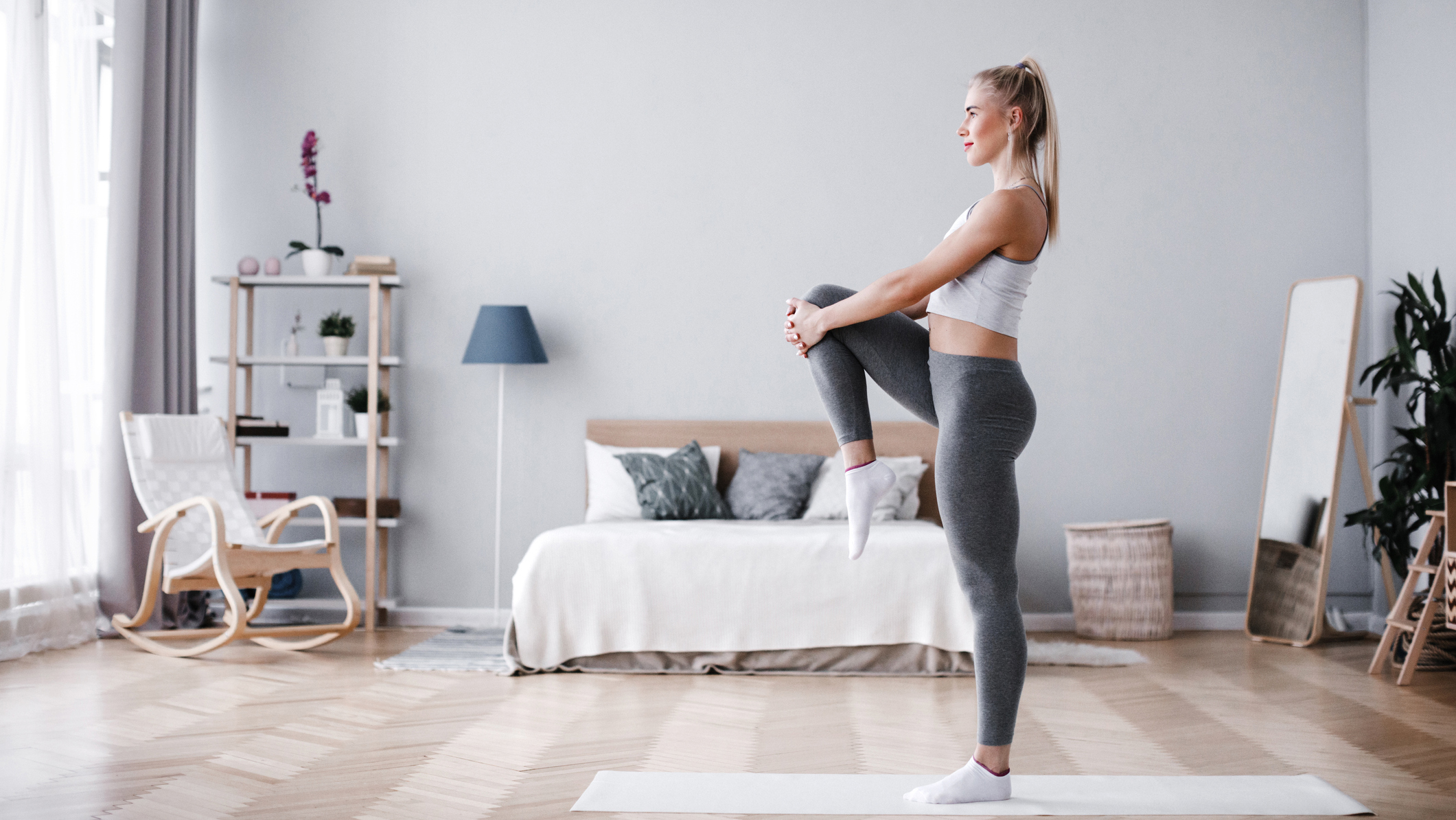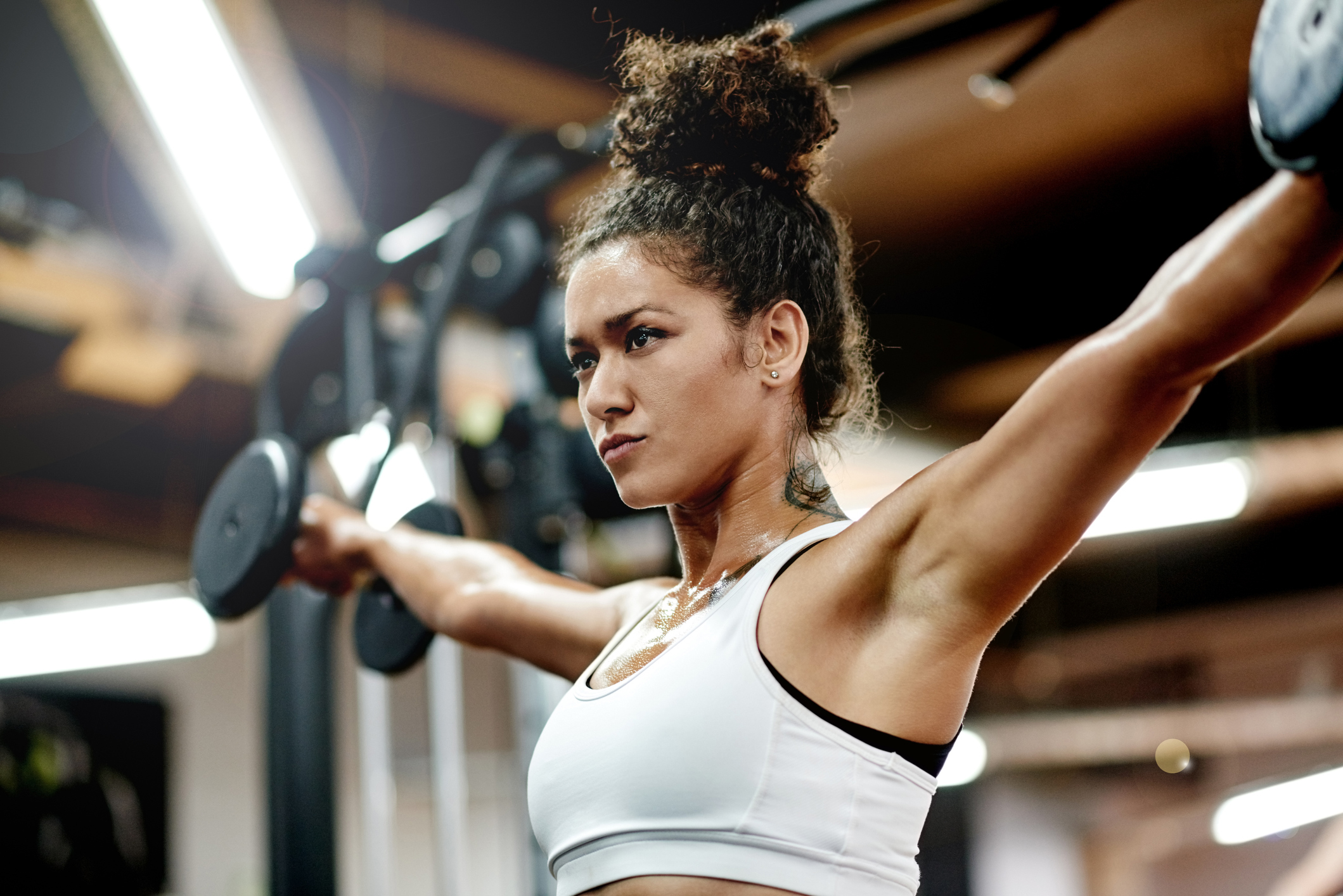Bodyweight vs weight workout: Which is better for your goals?
While you might be working out more at home, do you really need to add weights or are bodyweight workouts enough?


During lockdown, you couldn’t get a decent set of dumbbells for love nor money (let alone a set of our picks of the best dumbbells ). That saw loads of us either lifting bottles of wine/babies/bags of rice in place of actual weights or getting reacquainted with good old body weight circuits.
- Best dumbbells for women: the best ones to add to your at-home gym kit
Now that gyms are back open and we can stock up on weights again, however, should we be prioritising those heavy lifts or sticking with press-ups, pull-ups and burpees?
What exactly is weight training?
First off, it’s worth looking at what weight training actually means. It can be broken into three camps: power, hypertrophy and endurance.
- Power means lifting very heavy loads for a very short period of time (1-6 reps)
- Hypertrophy is about creating small tears in the muscles which then knit back together stronger (usually working with weights that we can lift for 10-12 reps)
- Endurance allows us to keep lifting for long periods of time using lighter weights (12+ reps)
Which camp you primarily work in will depend on your goals but ultimately, you want to touch a little on each. Sometimes we need to be able to lift something super-heavy for a few seconds; we might also find ourselves lugging heavy backpacks across South America at some point and that’s when we’ll need that muscular endurance capacity.

What are the benefits of weight training?
The main benefit of using weights is that it’s simple to make quite significant progress - even if you've just started doing beginner's workouts. The moment you feel a set of weights becoming too manageable, you can move up to the next weight. While it may be easier to really challenge yourself with weights than it is with body weight, with big weights comes big responsibility. Injuries are common when you’re lifting heavy - so it’s absolutely crucial that your form is spot on.
Make sure that you prioritise getting moves right above lifting a certain weight. The best way to do that is to either workout in front of a mirror so that you can see your form, get a PT or do sessions with a mate who can spot you.
What is body weight training and what are the benefits?
“Bodyweight workouts are an important place to start if you are new to training or in particular are looking to develop your strength,” explains Laura Hoggins, director of Lifted Fitness.
“Nailing the fundamental movement patterns is essential before we start looking to add any external load. Gaining confidence, control and range in our squats, lunges, push-ups, rows and hip-hinge (deadlift and glute bridges working the posterior chain) will enable us to build strong foundations.”
Over time, that means we can increase the intensity by adding weights - giving an extra challenge to the muscles without compromising on form or control.
Think you’re limited in what you can do using bodyweight alone? Think again! Here are just a few exercises that you can include in a bodyweight circuit:
- Press ups
- Sit ups
- Russian twists
- Bicycle crunches
- Squats (sumo, standard, jumping)
- Plank (side, reach, jacks, wiper, high)
- Glute bridge
- Lunges (walking, backwards, jumping)
- Bulgarian split squat
To build muscle using body weight alone, you want to increase the time under tension, increasing the number of reps you do and decreasing the amount of rest in between sets. Start off doing five full-body push-ups and you may find that you’re able to do 50 before too long!
So bodyweight vs weight training: which is better?
In an ideal world, we should be doing both weighted and body weight workouts. You want to be able to lift heavy and move your own body effectively. If you’re new to training, body weight is probably the best place to start, but that doesn’t mean you should abandon your press-ups and bodyweight squats just because you can deadlift 70KG.
If you’re using weights, find out how much you can lift now and then set yourself a weight goal. How long do you think you’ll need before you can lift your goal? Do you want to be able to do 10 reps of that goal weight or are you happy with a one rep max? Be realistic and concentrate on moving safely (not trying to lift too much, too soon). For body weight, set yourself a goal related to the number of reps you want to do. It could be that you want to be able to do 50 press-ups by Christmas or be able to do a pistol squat on both legs. For those goals, you’ll need to work on mobility and core strength, as well as upper and lower body - all of which you can get from bodyweight exercises.
Ultimately, you want to move your body in whatever way feels good. The most effective way to get stronger is to plan your workouts and to ensure that you’re not doing the same thing every day (that way you’ll avoid plateauing).
As Laura points out: "Neither are better than one another, only what's right and appropriate for the individual.”
Miranda is a fitness, wellness and sustainability journalist with almost a decade’s worth of experience writing and editing articles on everything from ultramarathon training to sports hypnosis. A qualified level 3 PT and three-time marathoner, you’ll probably find her clocking up the miles on the Regent’s Canal, racing around town on her Tokyo Bike in the pursuit of the perfect vegan croissant, or trying out the latest gym class.
